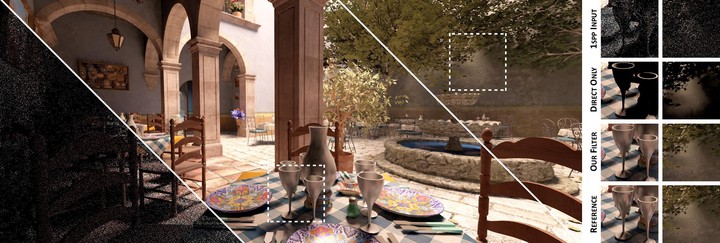Spatiotemporal Variance-Guided Filtering: Real-time Reconstruction for Path Traced Global Illumination

Abstract
We introduce a reconstruction algorithm that generates a temporally stable sequence of images from one path-per-pixel global illumination. To handle such noisy input, we use temporal accumulation to increase the effective sample count and spatiotemporal luminance variance estimates to drive a hierarchical, image-space wavelet filter. This hierarchy allows us to distinguish between noise and detail at multiple scales using luminance variance.
Physically-based light transport is a longstanding goal for real-time computer graphics. While modern games use limited forms of ray tracing, physically-based Monte Carlo global illumination does not meet their 30 Hz minimal performance requirement. Looking ahead to fully dymanic, real-time path tracing, we expect this to only be feasible using a small number of paths per pixel. As such, image reconstruction using low sample counts is key to bringing path tracing to real-time. When compared to prior interactive reconstruction filters, our work gives approximately 10x more temporally stable results, matched references images 5-47% better (according to SSIM), and runs in just 10 ms (+/- 15%) on modern graphics hardware at 1920x1080 resolution.
🏆 Best Paper